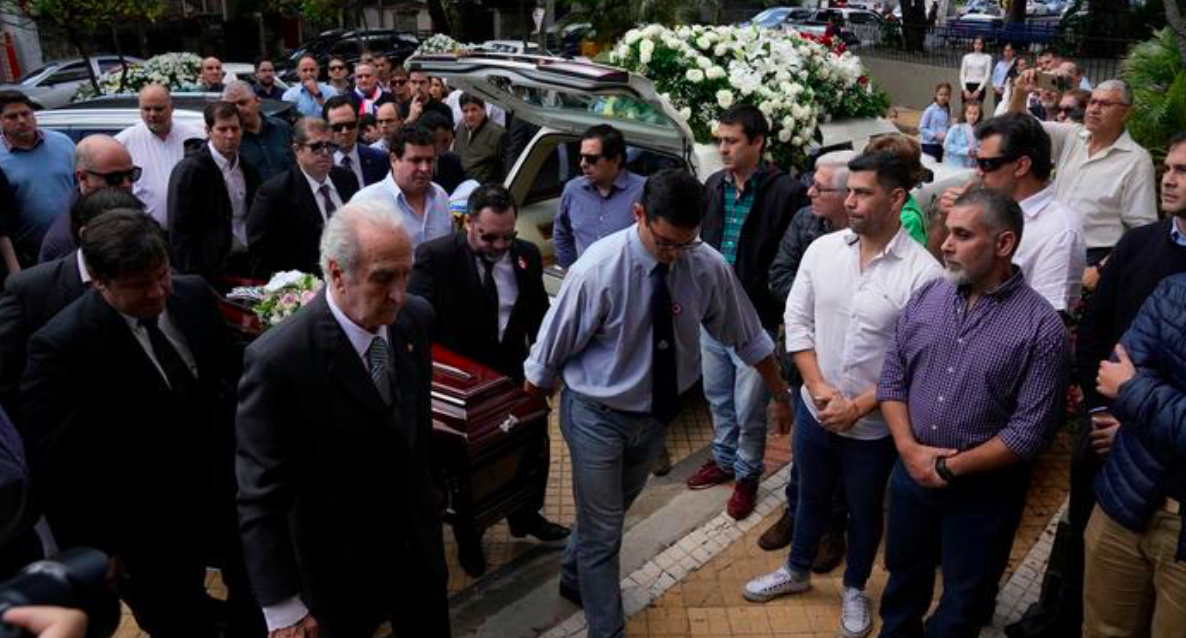RIO DE JANEIRO, BRAZIL – Violence shakes Paraguay. This Sunday (05.22.2022) the mayor of the northern city of Pedro Juan Caballero, which is considered a focus of smuggling and drug trafficking, was buried. He had been shot on May 17, just seven days after the murder of Paraguayan prosecutor Marcelo Pecci.
Although, in the first of the cases, the background of the crime is not so clear, in the second, the main hypotheses that are considered are all related to drug trafficking or money laundering, which were the main matters investigated by the fiscal.
Read also: Check out our coverage on Paraguay
“CRIME ECOSYSTEM”
“Pecci was not just any prosecutor. He was probably the best money laundering prosecutor in the country,” says sociologist Carlos Peris, a professor at the National University of Asunción (UNA), who specializes in investigating drug trafficking. In conversation with DW, he is skeptical that the case will be cleared up.

“That is going to go unpunished. There are investigations here, there are suspicions, there are hypotheses, but nothing is resolved,” he lamented. And he speaks of a “crime ecosystem” because the country has many advantages for illicit businesses. “Lax borders, a territory that does not have radars, complicit authorities at all levels, poverty,” are some of those that he mentions.
“Paraguay today occupies an area that functions as a hinge in a criminal corridor,” through which drugs and weapons are trafficked, among other things, explains José Amarilla, a specialist in strategic intelligence and a security consultant.
Paraguay has also become a distribution center for cocaine in recent years.
“It is an important logistics point in which these goods are directed towards Brazilian territory or towards the Atlantic coast, in the northern part of the South American continent; or towards the waterway of the Paraná and Paraguay rivers, which is a corridor towards the ocean that includes to Bolivia, Paraguay, Argentina, Brazil and Uruguay”, says the expert in organized crime. And he notes that “the Paraguay and Paraná rivers today have the second largest fleet in terms of river container barges, whose traffic is extremely intense,” which makes control difficult.
FROM MARIJUANA TO COCAINE
The beginning of drug trafficking activities in Paraguay is associated with the dictatorship of Alfredo Stroessner. But in the 2000s, international gangs from Brazil began to enter the country. First it was the “Red Command” and then the “First Capital Command,” which established “a new logic of crime,” according to Peris. “This logic continues to have its center on the dry border with Brazil. There is no police control there,” he explains, stressing that “then Paraguay enters what we call ‘cocainization’ in our studies.”
Paraguay, historically, was a marijuana-producing country. But these groups were looking for the highest revenue, which is achieved with cocaine.
“The coca leaves come from the Andean countries, clandestine laboratories are set up in the Bajo Chaco area, in Paraguay, and production is finished here. There is evidence that Paraguay is ‘cocainizing’, there are reports from the UNODC (United Nations Office on Drugs and Crime), who say that Paraguay is no longer just a transit country,” says the UNA professor.
The drug trafficking business, in any case, prospers without the Paraguayan State being able to stop it. “The First Capital Command operates very freely on the dry border with Brazil. It is estimated that this group has some 50,000 members; Paraguay has a total of 26,000 police officers,” Amarilla stresses. And he adds that the criminal organization does “the regional dirty work. The international commercial management work is articulated by mafias that are of European origin. Fundamentally, activity by the Calabrian mafia, the ‘Ndrangheta, has been detected in recent years in Argentine, Brazilian and Paraguayan territory”.
THE BONDS OF NARCOPOLITICS
The sums that are handled are large. “Marijuana, for example, moves between US$1 and US$4 billion dollars a year only within Paraguayan territory, and much more in the places of destination,” Amarilla illustrates, highlighting that the profits from cocaine are much higher.
Meanwhile, illicit money begins to undermine the state. “The economic strengthening of these organizations allows the infiltration of institutions that are dedicated to law enforcement. These organizations have a much greater logistical and corruption capacity than a couple of decades ago,” says the security adviser.
The sociologist Peris highlights another key factor, which points to the political sphere and the electoral system: “Politicians, increasingly, need extra funding, because when there are no longer closed lists (of candidates), each one has to run their campaign and many of them resort to drug trafficking. This is what is known as narcopolitics.”
The UNA professor predicts, consequently, a bleak future. “I believe that in the next electoral campaign there are going to be more political assassinations. Organized crime is spreading more and more. That is going to bring greater virulence to everything. More and more links to narco-politics are going to appear, which already exist in all sectors of Paraguayan politics, regardless of whether it is the Colorado or the Liberal party”. And there will be an increasing need for prosecutors like Marcelo Pecci, willing to confront such a criminal “ecosystem.”

